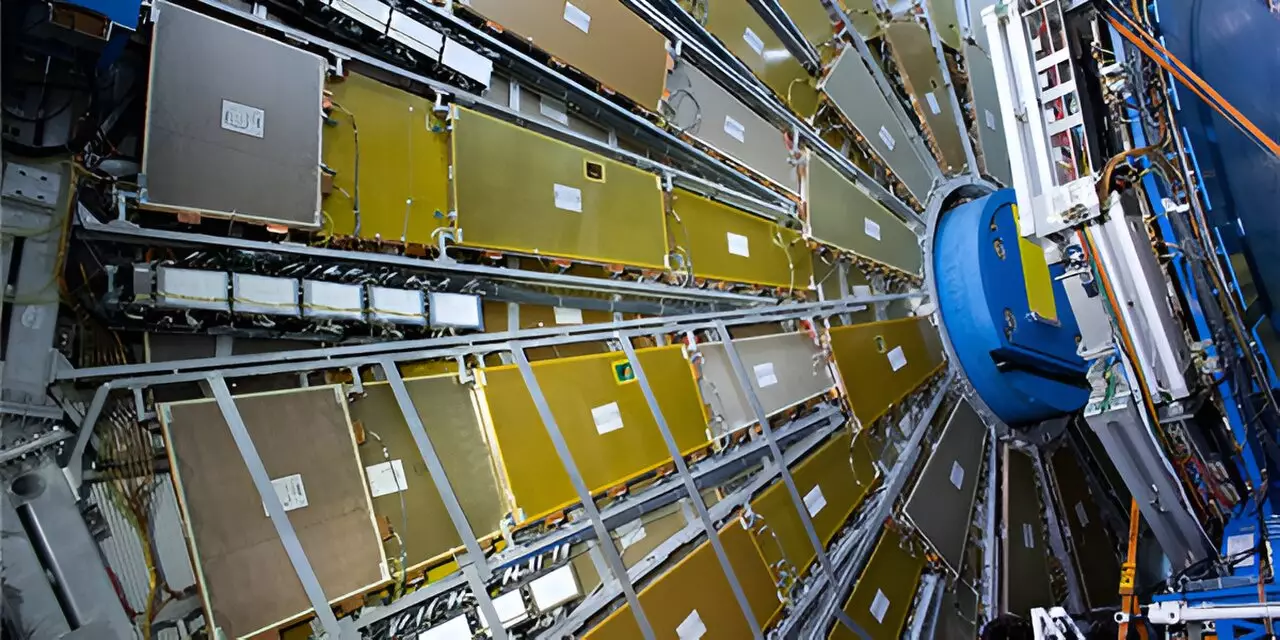Particle physics is a field devoted to unraveling the fundamental constituents of matter and the forces governing their interactions. At the forefront of this domain is the study of elementary particles—like protons, neutrons, and leptons—that play crucial roles in shaping the universe. Recent research led by Professors Andreas Crivellin from the University of Zurich and Bruce Mellado from the University of the Witwatersrand has shed light on fascinating deviations in particle behavior, hinting at the possible discovery of new bosonic particles. This potential revelation has significant implications for our understanding of fundamental physics.
The Standard Model of particle physics, established in the mid-20th century, provides a comprehensive framework for understanding particle interactions and their role in forming the visible universe. Despite its achievements, including the monumental discovery of the Higgs boson in 2012, the Standard Model remains incomplete; it fails to account for several cosmic phenomena. Crivellin and Mellado’s recent investigations have identified specific “multi-lepton anomalies” that suggest a divergence from the predictions made by the Standard Model. Such anomalies represent irregularities, specifically excesses in the production of leptons like electrons and muons, that cannot be fully explained by current theoretical frameworks.
Multi-lepton Anomalies and New Bosons
The discovery of multi-lepton anomalies is particularly intriguing and has sparked discussions about the existence of new, heavier bosonic particles. According to Mellado, these deviations could indicate a Higgs-like boson, which may play a vital role in particle decay processes. The implication is that there exists a heavier bosonic particle that is responsible for the observed anomalies. Such findings not only challenge existing theories but also open avenues for groundbreaking discoveries that could enhance our understanding of cosmos’ underlying structure.
The Legacy of the Higgs Boson
In the annals of particle physics, the Higgs boson remains a pivotal milestone. Predicted as early as 1964, its eventual discovery at CERN’s Large Hadron Collider (LHC) on July 4, 2012, marked a transformative moment. It confirmed the mechanism by which particles acquire mass, further enriching the narrative of the universe’s composition. The recognition of this discovery, spearheaded by physicists Francois Englert and Peter Higgs, with contributions from global collaborators including South Africans, culminated in a Nobel Prize in Physics in 2013. As Mellado articulates, the Higgs boson was the last missing component of the Standard Model, making its discovery a cornerstone achievement that redefined scientific inquiry in this domain.
The Importance of Anomalies in Scientific Discovery
Anomalies are often precursors to groundbreaking discoveries in science. They signify phenomena that deviate from established theory, hinting at underlying truths waiting to be uncovered. Crivellin emphasizes that previous significant scientific milestones were heralded by similar anomalies. Describing deviations from expected outcomes can be essential for steering research in fruitful directions, prompting scientists to explore the nature of these inconsistencies and their potential meanings. Anomalies in particle decay patterns at the LHC are consequently viewed as potential indicators of new physics, motivating continued exploration and experimentation.
The collaborative efforts in identifying and analyzing these multi-lepton anomalies showcase the international nature of particle physics research. The groundwork laid during the International Workshop Discovery Physics at the LHC illustrates the synergy between researchers around the world, fostering innovation and new insights. The dedication of Crivellin and Mellado’s work to the late Professor Daniel Adams stands as a testament to the collective endeavor within the scientific community to advance our understanding of the universe.
Additionally, with a focus on the confluence of historical data, theoretical predictions, and experimental results, the future of particle physics is poised for exciting new explorations. If the anomalies detected prove to lead to the confirmation of new bosons or other particles, it could fundamentally alter our comprehension of the universe’s fabric.
The pursuit of understanding the universe through particle physics remains a journey littered with questions and enigmas. The insights offered by Professors Crivellin and Mellado not only encourage scrutiny of current models but also invigorate the quest for deeper knowledge within fundamental science. Their findings emphasize that while the Standard Model has enriched our understanding, there remains a realm of the unknown that lies tantalizingly just beyond our grasp. Groundbreaking discoveries may soon follow as researchers continue to investigate these anomalies, catalyzing a new era of understanding regarding the very constituents of matter and the forces that govern their interactions. This invigorated exploration urges humanity to remain curious, as it has the potential to reshape our foundational knowledge of the cosmos.

